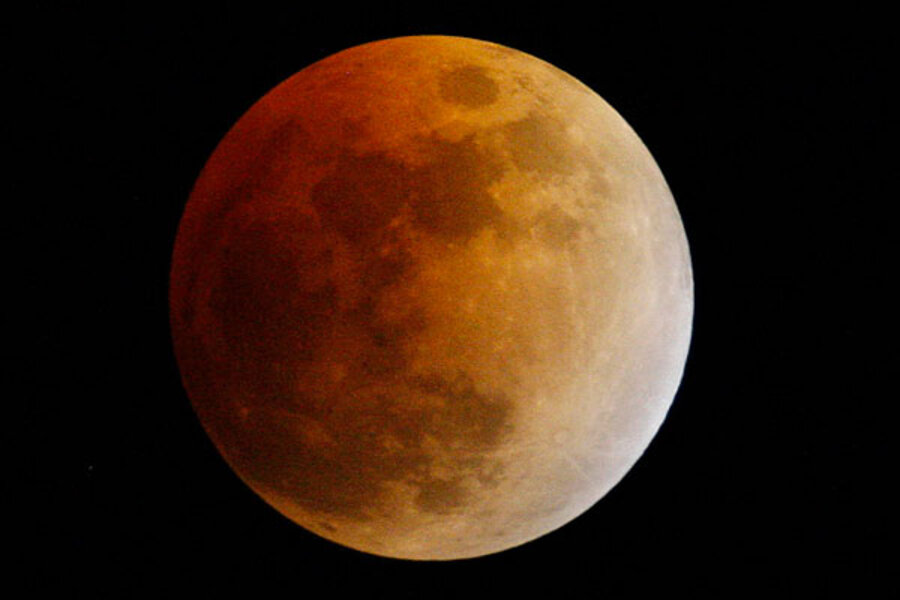Blood Moon to arrive Monday night. What is a Blood Moon?
Loading...
First things first: There is no such thing as a blood moon.
OK, now that we've got that out of the way, we can tell you what actually is happening overnight Monday, and why people are calling it a blood moon – a term that leaves astronomers scratching their heads.
The short version is: Early Tuesday morning, about two hours after midnight, much of North and South America will have a chance to see a full lunar eclipse. Not only that, it will be the first of four consecutive lunar eclipses during the next two years, with the remaining three each happening six months after the previous one.
Astronomers do have a name for this. It's called a tetrad, and it's unusual but hardly unprecedented.
There have been 62 tetrads since the first century, Earth Sky magazine reports. There will be eight this century alone, though none occurred in the 17th, 18th, or 19th century.
But what about this blood moon thing?
That, apparently, is the invention of two Christian pastors, Mark Blitz and John Hagee, who suggest that this particular tetrad has religious significance. The reason? The first and the third eclipses (April 2014 and 2015) will happen on the Jewish festival of Passover, while the second and fourth (October 2014 and 2015) will happen during the Jewish Tabernacles festival.
Since the Jewish calendar is a lunar calendar, that is perhaps not as unusual as it sounds, but Mr. Hagee, a pastor in San Antonio, Texas, suggests there is a "world-shaking event that will happen between April 2014 and October 2015," according to the San Antonio Express-News. Two years ago, Hagee gained international attention for a series of sermons titled, “Could 2012 be the end of the world as we know it?” the Express-News reports.
Eight of the 62 tetrads since the first century have coincided with Passover, according to Earth Sky's math.
As for "blood"?
That's just because the moon turns a coppery red during any full eclipse. During a full eclipse, the sunlight that hits the moon is passing though Earth's atmosphere at sunrise and sunset. So it sheds that red glow on the moon.
In other words, any full lunar eclipse could be called a blood moon. There's nothing different about how this one will look, despite all the PR.
The eclipse will begin at about 2 a.m. Eastern Daylight Time on Tuesday and last about 3-1/2 hours, according to Space.com. By 3 a.m., the eclipse will be full.








